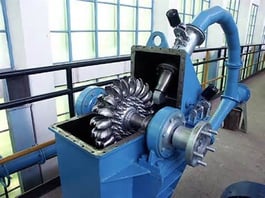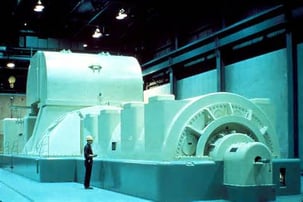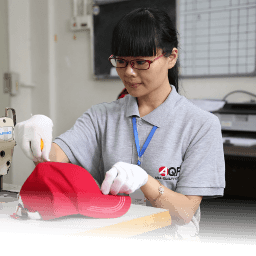Turbines
Constructed in a wide range of sizes and configurations, turbines are critical components of wind, hydro, and nuclear power generation projects. These machines must operate continuously under extreme conditions, and mechanical failures due to sub-standard components or manufacturing techniques could lead to extended downtime for repairs.
Blades
Ranging in length from 20 to 40 meters and rotating at up to 22 rpm, wind turbine blades can achieve tip-speeds in excess of 300 ft/s. These blades must be flexible enough to cope with normal operating stresses, but rigid enough to prevent the blades from contacting the tower shaft.
Steam Generators
Commercial grade steam generators can be comprised of up to 16,000 coolant circulation tubes, and are used to produce the steam that powers turbines to produce electricity. To prevent boiling, coolant traveling through these tubes must be kept at very high pressure. Steam generators must be regularly inspected and monitored for structural integrity and corrosion.
Reactor Vessels
Vital to the safe operation of nuclear power plants, these pressurized vessels are used to contain the reactor coolant and core. Reactor vessels are often constructed of steel and concrete, and contain a neutron reflector or absorber to prevent the structure from becoming brittle over time due to constant fast-neutron exposure.






















